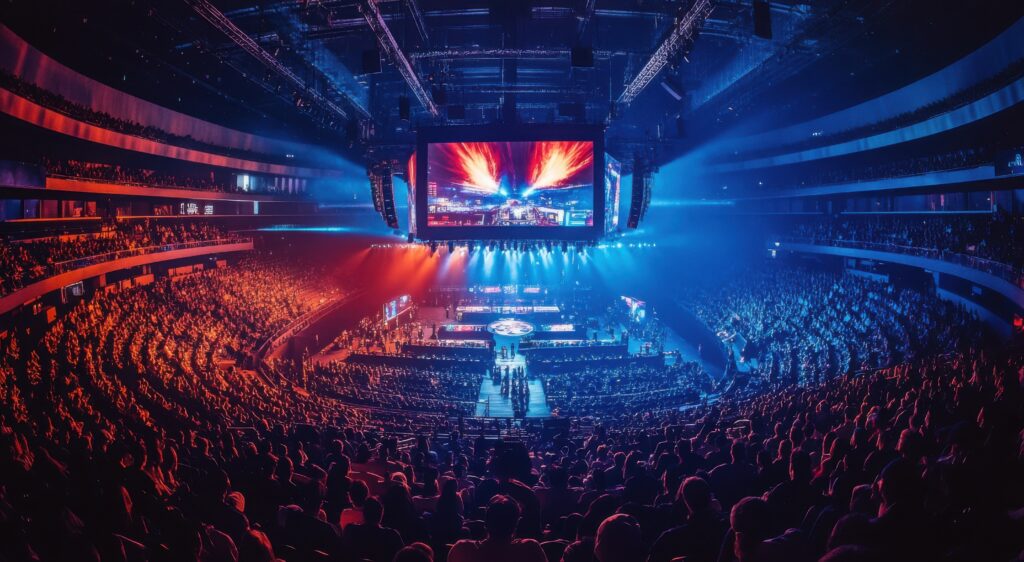A Signiant Perspective on the Post-Production Industry
2024 tested the resilience of the post-production industry. The lingering effects of strikes and what some have dubbed a ‘content recession’ reshaped how media companies operate. From cautious spending to an increased demand for cost-effective, multi-functional tools, companies are forced to adapt to an evolving landscape. Despite challenges, glimpses of optimism and recovery are happening, setting the stage for a much brighter 2025.
We sat down with our account executives to discuss the year and what they learned from hundreds of discussions with the post-production community.

Top L to R: Vinny Testa, Max Jacobs, Matt Gaede, Anthony Reppucci
Bottom L to R: Andrew DiVincenzo, Tyler Cummings, Carly Previte, Drew Litchfield
The impact of 2023 actors and writers’ strikes certainly was still the elephant in the room in 2024. What were customers and prospects saying?
Vinny Testa: Everybody says the same thing — ‘the industry is projected to come back soon.’ The strikes are behind us, and the money and projects are starting to flow.
Max Jacobs: The experiences differ depending on the region, but in the U.S., particularly in L.A., people are saying, ‘It’s still slow here.’ We are seeing more projects outside of L.A., and some international markets are heating up.
While Los Angeles, the epicenter of content creation, bore the brunt of the strikes’ impact, what has the impact been in other parts of the world?
Carly Previte: I think it has slowed down a bit across the board, but it’s definitely more centered around LA and where the strikes occurred.
Andrew DiVincenzo: Agreed. A significant amount of work was coming from the LA post-production market, but other markets are filling in to keep the industry going.
Max Jacobs: In the U.S., there’s a noticeable lack of projects. But globally, it’s a different story — other regions are busier. Recently, there has been a lot of interest from other countries or companies with international branches in Australia, Canada, France, Spain, and the UK.
Tyler Cummings: But they’ve had to adjust if they were tied to Hollywood. I talked to a VFX company in India. The VFX industry there was hit hard. It’s a huge part of what they do. They have VFX companies that do Bollywood films, but a lot of big money comes from LA. The government has provided tax benefits and incentives to help these companies because they’ve been hurt so badly.
I was talking with one guy in England who moved to India to do Bollywood films because that was the only work happening. Bollywood continued, but the LA Hollywood work stoppage hurt.
Andrew DiVincenzo: But we’re seeing more projects on the horizon. There’s more urgency and excitement now as more projects are being approved. The past two months have been especially busy for our team, a great indicator heading into next year.
With content production ramping back up after the strikes, how has this recovery influenced the post-production buying process?
Anthony Reppucci: There is a big difference in the buying process compared to 2020/2021. Companies are more conservative and moving slowly as opposed to 2020, when it was rush, rush. They are buying, but the cycles are longer as companies proceed with more caution than before.
Andrew DiVincenzo: Cost sensitivity is key. Companies consolidating tools to reduce expenses are looking to us for multifunctionality. This has been a positive for Signiant as companies can save by bringing more workflows under a single platform.
Drew Litchfield: That’s what we’re seeing — doing more with less is the trend. If we can replace multiple tools with one, we’re solving a real problem.
Tyler Cummings: We’re seeing customers who use multiple file transfer tools move to the Signiant Platform. Having one solution that covers all their use cases cuts costs significantly over time.
Cost and cost-savings are key motivators for post-production customers today, but once those are addressed, technical needs take the spotlight. Beyond acceleration, a given with Signiant, what are the next most important factors in their decisions?
Max Jacobs: Security. Post-production companies come to us so they can work with larger studios, knowing that we’re one of the approved transfer methods. When you have Signiant at your facility, you’ve got a stamp of approval.
Carly Previte: I’ve heard a lot about TPN compliance lately. It’s great we have the gold shield.
Max Jacobs: Yes, it’s a big thing we’re hearing — in Europe, it’s been about TPN security requirements.
Drew Litchfield: I would say keeping the integrity of the file throughout the transfer. Having no corruption is extremely important for post-production transfers.
Matt Gaede: Storage independence. We’ve heard that companies are looking for cheap storage. So, if they can get multiple vendors to connect to Signiant, it’s a win.
Which Signiant products or services are you seeing gain the most traction with post houses lately?
Vinny Testa: Jet. It’s a great complimentary product to Media Shuttle. A ton of my customers are looking to consolidate tools and services, so having everything on the same platform makes management easier.
Carly Previte: As workflows evolve, customers are excited about Jet’s automation capabilities. It’s not just about transferring files faster — it’s about streamlining repeatable processes, which frees up their teams for more creative work.
Andrew DiVincenzo: Media Engine has been a game-changer for teams managing large libraries. One customer mentioned how it saved them hours of searching and reviewing files, all without downloading. It’s becoming a must-have alongside Media Shuttle.
As 2024 comes to a close, it’s clear the post-production industry is navigating a pivotal moment. Challenges like economic uncertainty and shifting workflows have tested resilience, but they’ve also inspired adaptation. Signiant plays a role in supporting this transformation, providing tools that help post houses stay secure, efficient, and agile.
We see a lot more optimism heading into 2025. Many projects that were greenlit this year are starting to go into post now. Signiant is excited to work with the production and post-production community to help them operate more efficiently, enable globally distributed teams, automate repetitive tasks, and do more with less on the Signiant Platform.


